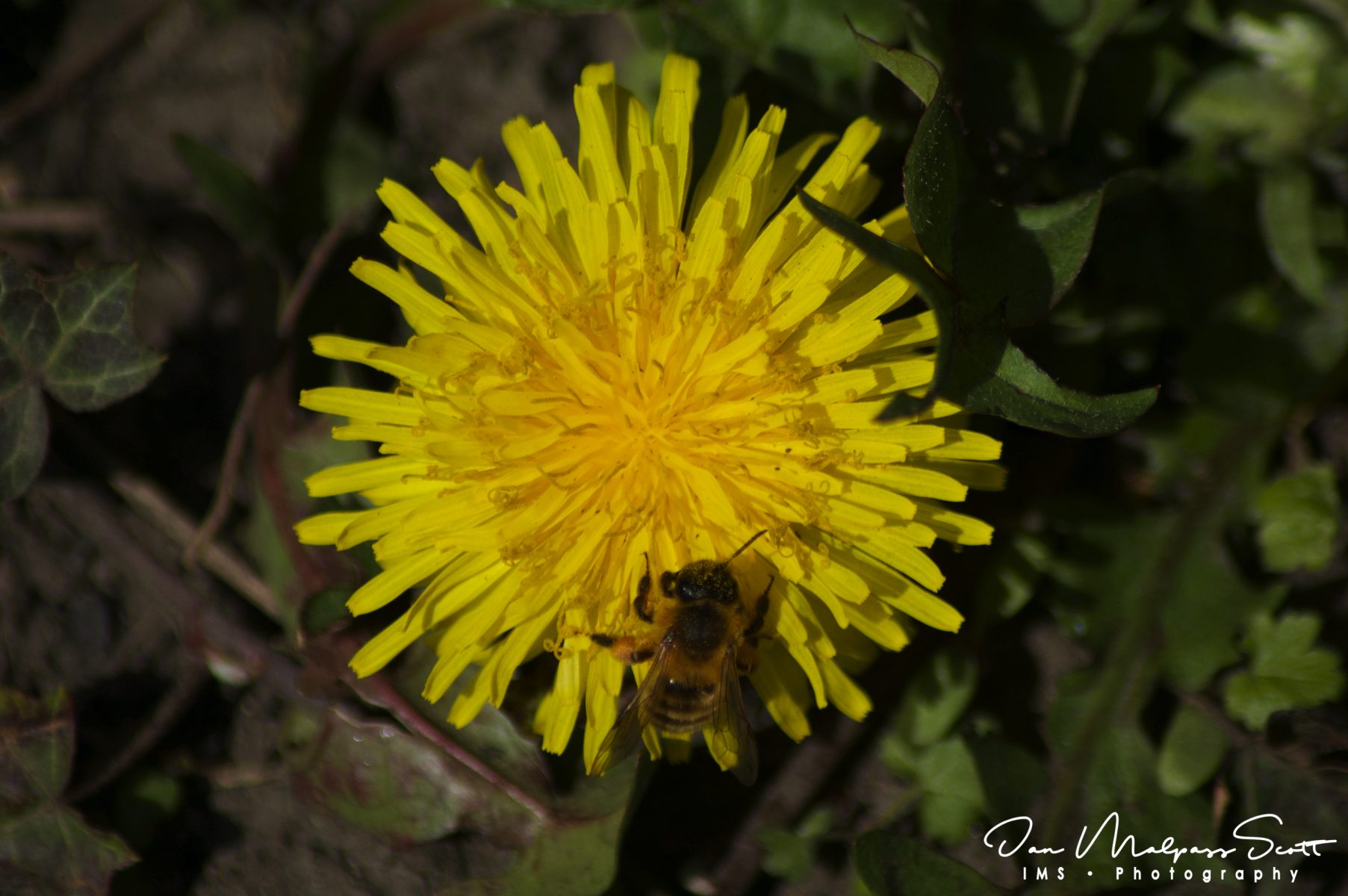A honey bee visiting a dandelion flower at Wylam, Northumberland
Taraxacum officinale, the dandelion or common dandelion, is a flowering herbaceous perennial plant of the dandelion genus in the family Asteraceae (syn. Compositae). The common dandelion is well known for its yellow flower heads that turn into round balls of many silver-tuftedfruits that disperse in the wind. These balls are usually called “clocks” in both British and American English. The name “blowball” is also used.
The common dandelion grows in temperate regions of the world in lawns, and on roadsides, disturbed banks, shores of waterways, and other areas with moist soils. The common dandelion is most often considered a weed, especially in lawns and along roadsides, but the leaves, flowers, and roots are sometimes used in herbal medicine or as food.
The European dark bee (Apis mellifera mellifera) is a subspecies of the western honey bee, whose original range stretched from west-central Russia through Northern Europe and probably down to the Iberian Peninsula. They belong to the ‘M’ lineage of Apis mellifera. They are large for honey bees though they have unusually short tongues (5.7-6.4 mm) and traditionally were called the German Dark Bee or the Black German Bee, names still used today even though they are now considered an Endangered Breed in Germany. Their common name is derived from their brown-black color, with only a few lighter yellow spots on the abdomen. However today they are more likely to be called after the geographic / political region in which they live such as the British Black Bee, the Native Irish Honey Bee, the Cornish Black Bee and the Nordic Brown Bee, even though they are all the same subspecies, with the word “native” often inserted by local beekeepers, even in places where the bee is an introduced foreign species. It was domesticated in Europe and hives were brought to North America in the colonial era in 1622 where they were referred to as the English Fly by the Native American Indians.
A. m. mellifera can be broadly distinguished from other subspecies by their stocky body, abundant thoracal and sparse abdominal hair which is brown, and overall dark coloration. Overall, when viewed from a distance, they appear blackish, or in mellifera, rich dark brown.
Friedrich Ruttner worked closely with black bee beekeepers in Britain to identify wing veins (wing morphometry) to achieve “racial purity” in the breeding of their bees, however the process depends on the exact measuring methods employed, although it has now been established that the formation of wing veins are influenced by temperatures that capped brood are exposed to.


